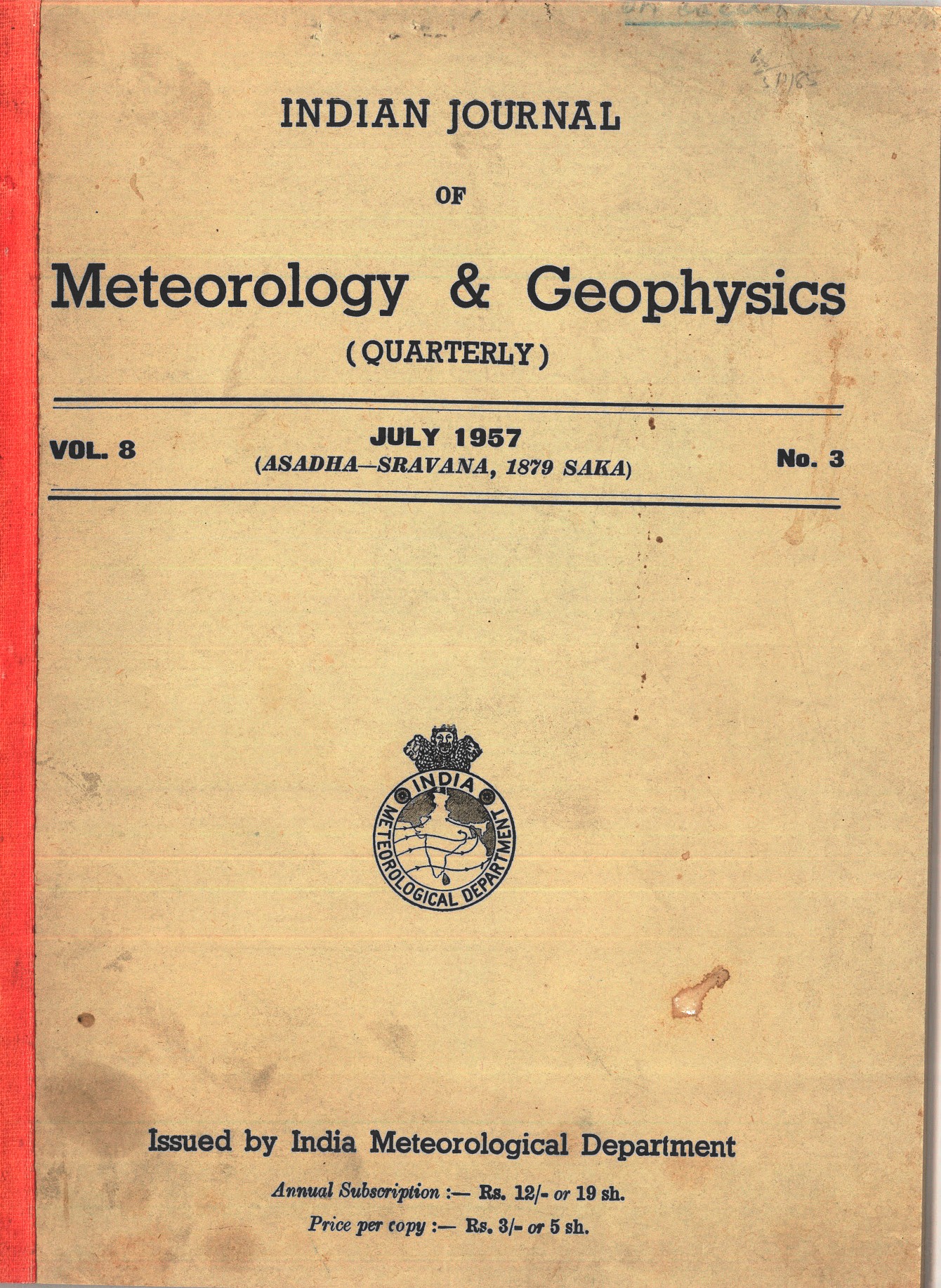On origin of fluctuations of sound transmissions In sea
DOI:
https://doi.org/10.54302/mausam.v8i3.5049Abstract
Fluctuation in transmitted intensity of sound when there is no relative movement of transducers and no interference from reflection at sea surface, has been usually assigned to thermal microstructure of the oceans, Thermal microstructure can affect the transmission in two possible ways, by scattering due to small changes of velocity of sound or due to interference of neighbouring rays going through varying number of thermal patches and reaching the same receiving hydrophone, Both these effects require very prominent and practically impossible thermal structure in order to explain the observed fluctuations, A hypothesis is put forward that this may be due to the presence of discrete scatterers in the form of tiny air bubbles which may be free or what is more likely part of zooplankton, On confirmation this may yield a powerful tool for measuring average production of plankton in the sea of various sizes depending upon the selected sound frequency, The fluctuation of 15,5 Kc frequency sound transmissions suggests that air bubbles or zooplankton air sacks of si7:e t mm should occur at the rate of one in every 76 litres of sea water in the ocean west of Cochin, South India.
Downloads
Published
How to Cite
Issue
Section
License
Copyright (c) 2022 MAUSAM

This work is licensed under a Creative Commons Attribution-NonCommercial 4.0 International License.
All articles published by MAUSAM are licensed under the Creative Commons Attribution 4.0 International License. This permits anyone.
Anyone is free:
- To Share - to copy, distribute and transmit the work
- To Remix - to adapt the work.
Under the following conditions:
- Share - copy and redistribute the material in any medium or format
- Adapt - remix, transform, and build upon the material for any purpose, even
commercially.



